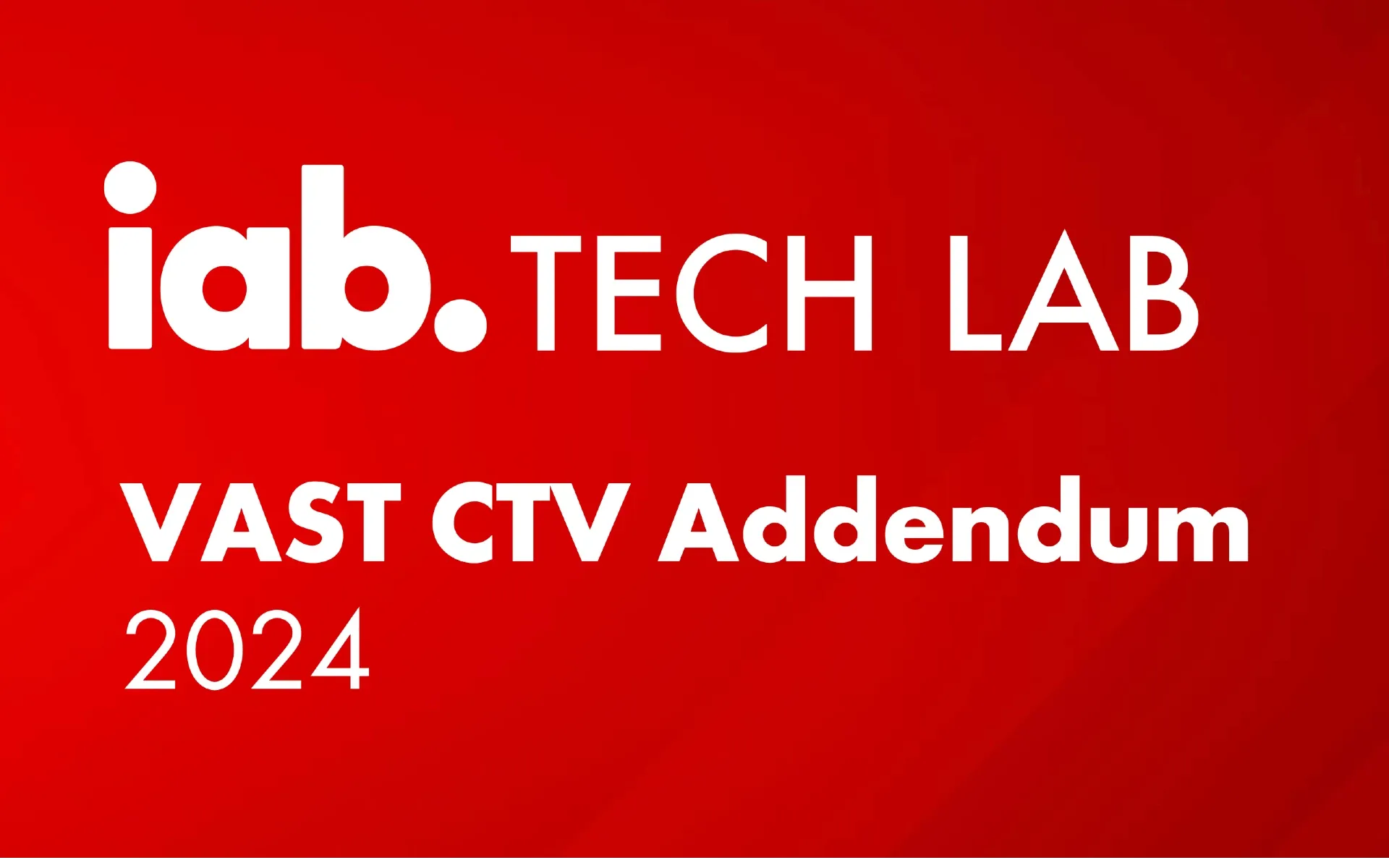IAB Tech Lab releases VAST CTV Addendum 2024 to advance video advertising
New addendum standardizes ad IDs, supports interactive ads, and enhances high-resolution content for Connected TV.

The Interactive Advertising Bureau (IAB) Technology Laboratory this week released the Video Ad Serving Template (VAST) CTV Addendum 2024. This comprehensive update aims to revolutionize video advertising across diverse TV-viewing environments, addressing critical features in the video supply chain. The addendum, designed to work in conjunction with existing VAST standards, introduces non-breaking changes to VAST 2 and 3 while providing guidance for VAST 4 implementations.
At the heart of this release lies the standardization of registered ad IDs across all VAST versions. Why is this significant? Ad registration simplifies crucial campaign use cases such as frequency capping, competitive separation, cross-platform measurement, and creative reconciliation. As the video supply chain grows increasingly complex, ad decisioning and measurement become more challenging without a persistent identifier for ads.
The addendum introduces the extension for VAST 2.0 and 3.x, mirroring the functionality already present in VAST 4.0. This extension allows for the inclusion of a unique ID generated by regional ad registration authorities like AD-ID in the US or ARPP in France. Even when an ad is not registered, the addendum recommends using a value of "unknown" to help track adoption of ad registration support.
Katie Stroud, Senior Product Manager at IAB Tech Lab, led the development of this addendum. According to the document, the Advanced TV Technical Working Group, with executive input from the Advanced TV Commit Group, played a crucial role in shaping these solutions.
The VAST CTV Addendum 2024 doesn't stop at ad identification. It also addresses the growing demand for interactive ad units in web video and Connected TV (CTV). The addendum introduces support for the Secure Interactive Media Interface Definition (SIMID), a more secure alternative to the deprecated Video Player-Ad Interface Design (VPAID). SIMID, released by IAB Tech Lab in 2019, offers a safer solution for ad interaction and event tracking without disrupting player operation.
To implement SIMID support, the addendum outlines the use of the node across all VAST versions. This node separates executable code from the ad creative, enabling a smoother ad experience and allowing for execution in compatible environments while gracefully degrading in others.
High-resolution support is another key focus of the addendum. As the digital video landscape expands to include ultra-high-resolution screens in CTV, cross-platform ad placement requires options for including high-resolution ad creative suited to these environments. The addendum introduces the node for VAST 2.0 and 3.x, a feature already present in VAST 4.0. This node allows for the inclusion of a high-resolution file intended for large screen TVs, offering server-side ad insertion (SSAI) vendors a file that can be transcoded to optimum parameters for various environments.
The addendum also addresses privacy concerns by introducing icon support for the Digital Services Act (DSA) in the European Union. The node, originally introduced in VAST 3.0 for programs like AdChoices, has been extended to support DSA compliance. This extension allows Online Platforms to provide users with real-time access to information about ads, including the advertiser's identity, financing details, and parameters used for ad selection.
By standardizing ad identification and enhancing support for interactive and high-resolution ads, the VAST CTV Addendum 2024 lays the groundwork for more sophisticated targeting, measurement, and user engagement in Connected TV environments.
The release of this addendum reflects the ongoing evolution of digital video advertising. As streaming services continue to gain market share and traditional linear TV viewing declines, advertisers are increasingly looking to CTV as a way to reach engaged audiences. The enhanced features outlined in the VAST CTV Addendum 2024 provide the technical foundation needed to deliver more personalized, interactive, and measurable ad experiences in these environments.
Implementation of these new standards will require significant effort from various stakeholders in the video advertising ecosystem. Ad platforms, video player developers, and server-side ad insertion vendors will need to update their systems to support the new extensions and nodes. Creative agencies and advertisers will need to adapt their workflows to include ad registration and the creation of high-resolution assets suitable for CTV environments.
The IAB Tech Lab has emphasized the importance of industry-wide adoption to realize the full benefits of these updates. Companies working with VAST are encouraged to identify areas where the addendum might impact their ad platforms, software, user interfaces, or system integrations. Additionally, staff training and documentation may need to be updated to account for new workflows, such as the process of registering ad creative and providing universal ad IDs.
One of the key challenges in implementing these changes will be ensuring backward compatibility with existing systems while encouraging adoption of the latest standards. The addendum provides guidance for implementing new features in older VAST versions, allowing for a gradual transition as the industry moves towards more widespread adoption of VAST 4.x.
The introduction of the VAST CTV Addendum 2024 also raises questions about the future of video ad serving standards. As the digital advertising landscape continues to evolve, with new technologies and platforms emerging, industry stakeholders will need to remain vigilant in adapting standards to meet changing needs.

